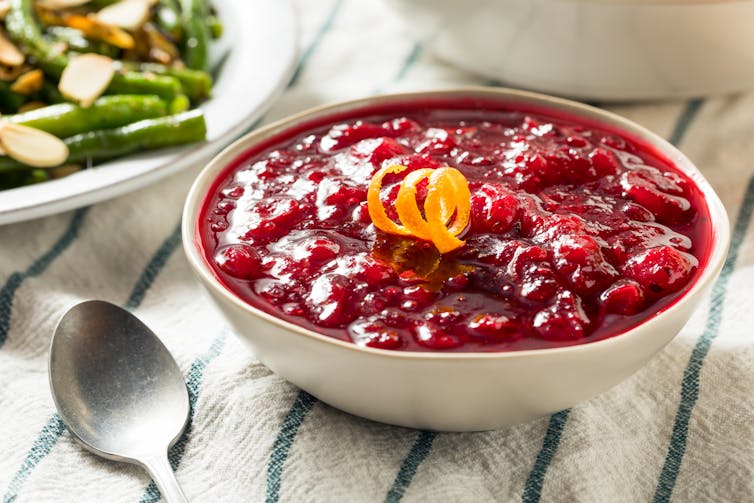The holidays are full of delicious and indulgent food and drinks. It’s hard to resist dreaming about cookies, specialty cakes, rich meats and super saucy side dishes.
Lots of the healthy raw ingredients used in holiday foods can end up overshadowed by sugar and starch. While adding extra sugar may be tasty, it’s not necessarily good for metabolism. Understanding the food and culinary science behind what you’re cooking means you can make a few alterations to a recipe and still have a delicious dish that’s not overloaded with sugar.
Particularly, if you’re a person living with Type 1 diabetes, the holidays may come with an additional layer of stress and wild blood glucose levels. It’s no time for despair though – it is the holidays, after all.
Cranberries are one seasonal, tasty fruit that can be modified in recipes to be more Type 1 diabetic-friendly – or friendly to anyone looking for a sweet dish without the extra sugar.
I am a food scientist and a Type 1 diabetic. Understanding food composition, ingredient interactions and metabolism has been a literal lifesaver for me.
Type 1 diabetes defined
Type 1 diabetes is all day every day, with no breaks during sleep, no holidays or weekends off, no remission and no cure. Type 1 diabetics don’t make insulin, a hormone that is required to live that promotes the uptake of glucose, or sugar, into cells. The glucose in your cells then supplies your body with energy at the molecular level.
Consequently, Type 1 diabetics take insulin by injection, or via an insulin pump attached to their bodies, and hope that it works well enough to stabilize blood sugar and metabolism, minimize health complications over time and keep us alive.
Type 1 diabetics mainly consider the type and amount of carbohydrates in foods when figuring out how much insulin to take, but they also need to understand the protein and fat interactions in food to dose, or bolus, properly.
In addition to insulin, Type 1 diabetics don’t make another hormone, amylin, which slows gastric motility. This means food moves more quickly through our digestive tract, and we often feel very hungry. Foods that are high in fat, proteins and fiber can help to stave off hunger for a while.
Cranberries, a seasonal treat
Cranberries are native to North America and grow well in the Northeastern and Midwestern states, where they are in season between late September and December. They’re a staple on holiday tables all over the country.

Cranberries are a classic Thanksgiving side dish, but cranberry sauce tends to contain a lot of sugar.
bhofack2/iStock via Getty Images
One cup of whole, raw cranberries contains 190 calories. They are 87% water, with trace amounts of protein and fat, 12 grams of carbohydrates and just over 4 grams of soluble fiber. Soluble fiber combines well with water, which is good for digestive health and can slow the rise of blood glucose.



